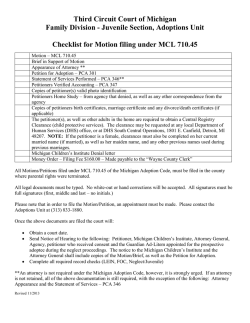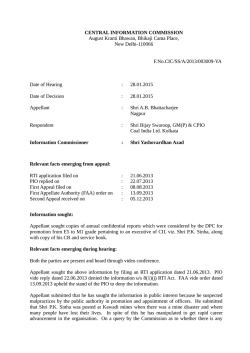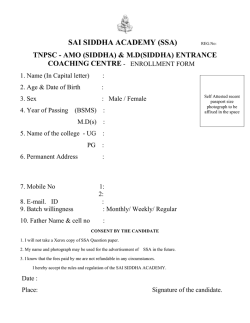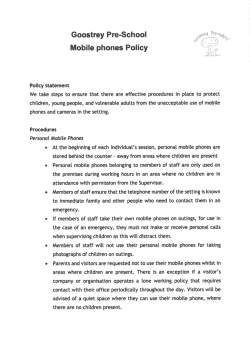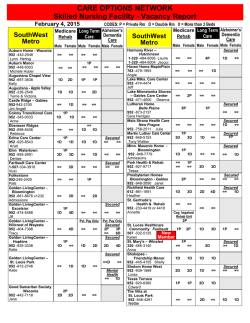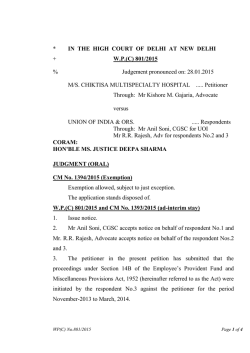
HIGH COURT OF CHHATTISGARH : BILASPUR
HIGH COURT OF CHHATTISGARH : BILASPUR ------------------------------------------------------------------------------------------------Single Bench : Hon'ble Shri Justice Prashant Kumar Mishra ------------------------------------------------------------------------------------------------Writ Petition (C) No.1386 of 2013 PETITIONERS Shri Mohan Products Pvt. Ltd. & Others Versus RESPONDENT State Bank of India Single Bench : Hon'ble Shri Justice Prashant Kumar Mishra ------------------------------------------------------------------------------------------------Present :- Shri Ankit Singhal, Advocate for the petitioners. Shri P.R. Patankar, Advocate for the respondent ------------------------------------------------------------------------------------------------ORDER (Passed on this 28th day of January, 2015) 1. The borrower has preferred this writ petition under Article 226 of the Constitution of India seeking a declaration that the impugned action of the respondent–State Bank of India (for short 'the Bank') of publishing photographs of the petitioners in the newspapers declaring them as defaulter is illegal and without any authority of law; to issue a writ of prohibition prohibiting the Bank from publishing such photographs and from adopting extra legal means of publishing photographs to recover the dues from the petitioners. 2. Petitioner No.1 is a company whereas the petitioners No.2 & 3 are its Directors. The company is engaged in the business of manufacturing of MS CTD Bar, Round, Angle, Channel, Flat, Square, etc. In order to fulfill its working capital, it applied for and was sanctioned cash credit facility to the tune of Rs.275 lacs and 2 SME credit plus to the tune of Rs.25 lacs in December, 2008. A residential house originally mortgaged in another loan account of M/s Mohan Marketing was also made applicable in the subject loan accounts. The limit was enhanced by Rs.55 lacs in August, 2009, which was further enhanced by Rs.9 lacs in October, 2009. In November, 2010 the cash credit limit was enhanced to Rs.375 lacs and upon repayment of earlier enhanced limit of Rs.55 lacs, the total enhanced facility stood at Rs.409 lacs. According to the petitioners, on account of slackness in the global steel market the petitioner also suffered paucity of raw material effecting its business, resulting in default of repayment. 3. The Bank served a demand notice on 31.01.2012 for Rs.4.15 crores (approx.) under Section 13 (2) of the Securitization and Reconstruction of Financial Assets and Enforcement of Security Interest Act, 2002 (for short 'the Act, 2002') and thereafter, proceeding under Section 13 (4) of the Act, 2002 for recovery of the mortgaged property was initiated. Possession of two other properties were also allegedly taken on 01.09.2012. The Bank also proceeded to issue a notice on 31.05.2013 threatening the petitioners that the decision has been taken by the competent authority to publish the photographs of borrowers and guarantors in the leading newspapers. On petitioner's reply, the Bank again sent a letter to the petitioners on 18.06.2013 that the steps for publication of photographs in the newspapers/notice board of the 3 Bank is being done as per the Bank's extant instructions. A similar notice was served on the petitioners on 15.07.2013 also, which led to filing of complaint by the petitioner before the Urla Police Station, Raipur on 29.07.2013. 4. It has been urged by Shri Singhal, learned counsel appearing for the petitioners, that the impugned action of the respondent Bank is not only illegal, but is defamatory and has no sanction under the provisions of the Act, 2002 or the Rules made thereunder. Learned counsel would rely upon the decisions of the Calcutta High Court in Ujjal Kumar Das & Anr. v. State Bank of India & Ors.1 and Kerala High Court in Venu. P.R. v. The Assistant General Manager2. 5. Per contra, Shri Patankar, learned counsel appearing for the respondent Bank, would submit that the Bank has not committed any illegality nor the action has the effect of defaming the petitioner. Learned counsel would rely upon the decision of Madhya Pradesh High Court in Ku. Archana Chauhan v. State Bank of India3, and the decision rendered by the Division Bench of Bombay High Court in D.J. Exim (India) Pvt. Ltd. & Ors. v. State Bank of India & Ors.4. Learned counsel would also rely on the decision of Madras High Court in Mr. K.J. Doraisamy v. The Assistant General Manager5. W.P. 10315 (W) of 2013 WP (C) No.10864/2013 (G) and other connected matter i.e. WP (C) No.17081/2013 3 [2007] AIR (MP) 45 4 WP (L) No.2808 of 2013 5 2006 (4) MLJ 1877 1 2 4 6. I have heard learned counsel appearing for the parties, perused the pleadings and the documents appended thereto. 7. The first decision on the issue was rendered by the High Court of Madhya Pradesh in Ku. Archana Chauhan (supra). In the said case, it was observed that publication of photographs of the borrowers has not been made impermissible and is, therefore, neither arbitrary nor illegal or defamatory. 8. The Kerala High Court in Venu P.R. (supra), where the decisions of the Madhya Pradesh High Court rendered in Ku. Archana Chauhan (supra), Madras High Court in Mr. K.J. Doraisamy (supra) and the Calcutta High Court in Ujjal Kumar Das (supra) were cited, has disagreed with the opinion of Madhya Pradesh High Court & Madras High Court and followed the order passed by the Calcutta High Court to restrain the Bank from publishing the photographs. The Kerala High Court found that the loan agreement only authorized the Bank to publish name of the loanees and not their photographs. It has observed that there is nothing immoral in being unable to repay the loans availed of owing to the floundering of business or due to some unavoidable reasons which can enable the bank to infringe the right to privacy of loanees. There is no compelling public interest warranting the publication of photographs of the loanees. It further observed that some of the loanees may even be driven to commit suicide for fear of ignominy on publication of their photographs and such publication is clearly 5 an affront to the right to live with dignity and honour as well as the right to privacy of the loanees. 9. The Calcutta High Court has tried to dissect the provisions of the Act, 2002, the Rules and the guidelines framed by the Reserve Bank of India on willful defaulters to examine whether the action of publication of photographs has any legal backing. 10. In Mr. K.J. Doraisamy (supra) the Single Judge of Madras High Court dismissed the writ petition filed by the borrowers observing that if the borrowers could find newer and newer methods to avoid repayment of the loans, the Banks are also entitled to invent novel methods to recover their dues. It is further held therein that the petitioner is not entitled to seek the relief of a writ of mandamus because the same can be issued only to compel the performance of a statutory or public duty, but the prayer made in the writ petition is to prevent the bank from performing its public duty and that the challenge is to notice issued under Section 13 of the Act, 2002 for which a statutory alternative remedy lies. 11. The Division Bench of Bombay High Court in D.J. Exim (India) Pvt. Ltd. (supra) has considered all the above referred judgments of the Calcutta High Court, Madras High Court, Madhya Pradesh High Court and Kerala High Court. It is held in this judgment of Bombay High Court that Rule 8 of the Security Interest (Enforcement) Rules, 2002 (for short 'the Rules, 2002') permits publication of name of the borrower, details of the mortgaged 6 property, etc., therefore, the Bank has the right to publish the name so that the public at large is aware as to who is the defaulter and it tends to caution the prospective buyer who may be offered the property which is mortgaged by these defaulters with the Bank. Thus, the Bombay High Court found no impediment in publication of photographs of willful defaulters. SLP (C) No.37726 of 2013 preferred against the order passed by the Bombay High Court in D.J. Exim (India) Pvt. Ltd. (supra) has been dismissed by the Supreme Court by its order dated 14.07.2014. 12. The aforesaid judgments of different High Courts placed before this Court require it to appreciate the following aspects : Publication of photographs; whether offends the right of privacy or is otherwise defamatory to the borrower? Whether publication of photograph is defendable under the applicable legal provision? 13. In P. Ramanatha Aiyar's Advanced Law Lexicon, right of privacy has been referred as a right founded upon the claim that a man has the right to pass through this world, if he wills, without having his picture published, his business enterprises discussed, his successful experiments written up for the benefit of others, or his eccentricities commented upon, either in hand bills, circulars, catalogues, periodicals, or newspapers; and necessarily the things which may not be written and published of him must not be spoken 7 of him by his neighbours, whether the comment be favourable or otherwise. 14. In Distt. Registrar and Collector, Hyderabad and another v. Canara Bank Etc.6 the Supreme Court, in para 39, has held thus : “39. A two-Judges Bench in R. Rajagopal v. State of Tamil Nadu (1994) 6 SCC 632, held the right of privacy to be implicit in the right to life and liberty guaranteed to the citizens of India by Article 21. “It is the right to be let alone”. Every citizen has right to safeguard the privacy of his own. However, in the case of a matter being part of public records, including court records, the right of privacy cannot be claimed. The right to privacy has since been widely accepted as implied in our Constitution, in other cases, namely, PUCL v. Union of India, (1997) 1 SCC 301; Mr. X v. Hospital 'Z', (1998) 8 SCC 296; People's Union for Civil Liberties v. Union of India, (2003) 4 SCC 399; Sharda v. Dharmpal, (2003) 4 SCC 4931. The impugned provision of the A.P. Amendment on anvil:” 15. What is deducible from the above is that right of privacy is implicit in the right to life and liberty and, thus, every citizen has right to safeguard the privacy of his own. The pertinent question is whether such right of privacy can be claimed by a person who has obtained financial assistance from a bank, the custodian of public money, and the bank is proceeding to recover the debt in terms of the contract and the provisions of law. By the very nature of the proceedings drawn by the bank against the petitioner, it does not AIR 2005 SC 186 6 8 appear that the bank is encroaching on the petitioner's right of privacy. If such privacy is to exist then the publication of public notice, which is otherwise expressly permissible under Rule 8 of the Rules, 2002 may also offend, the right of privacy, therefore, in a case of recovery of loan by the bank, publication of photograph along with the name and address of the borrower and/or guarantor together with the details of the property would not infringe the right of privacy. 16. As a matter of fact, it depends on the personality of the person as to whether he is more popular by name or by his photograph. This leaves me to consider whether publication of photograph would otherwise be defamatory. The defemation happens when something false or malicious is propagated in the name of an individual, however, when a person has obtained loan and the said transaction is a fact, mere publication of photograph shall not amount to defamation even if the definition of 'defamation' is stretched to its widest possible limit. It may be a perception in the mind of borrower that publication of his photograph may malign his public image, but that would not amount to defamation as such. When a person fails in business or he does not earn promotion in his service career on account of any misconduct or lack of performance, his reputation or image otherwise suffers a jolt. However, those realities of the life cannot be pressed into service to brand the action of the bank as illegal, arbitrary or immoral. 9 17. It is put forth by the petitioner that none of the provisions contained under the Act, 2002 or the Rules framed thereunder expressly permit publication of photograph of the borrower in the newspaper, therefore, such publication has no legal backing and it must be held to be illegal. 18. Rule 8 of the Rules, 2002 deals with sale of immovable secured assets. It reads thus : “8. Sale of immovable secured assets.(1) Where the secured asset is an immovable property, the authorised officer shall take or cause to be taken possession, by delivering a possession notice prepared as nearly as possible in Appendix IV to these rules, to the borrower and by affixing the possession notice on the outer door or at such conspicuous place of the property. (2) The possession notice as referred to in sub-rule (1) shall also be published, as soon as possible but in any case not later than seven days from the date of taking possession, in two leading newspaper] one in vernacular language having sufficient circulation in that locality, by the authorised officer. (3) In the event of possession of immovable property is actually taken by the authorised officer, such property shall be kept in his own custody or in the custody of any person authorised or appointed by him, who shall take as much care of the property in his custody as a owner of ordinary prudence would, under the similar circumstances, take of such property. (4) The authorised officer shall take steps for preservation and protection of secured assets and insure them, if necessary, till they are sold or otherwise disposed off. (5) Before effecting sale of the immovable property referred to in sub-rule (1) of rule 9, the authorised officer shall obtain valuation of the 1 property from an approved valuer and in consultation with the secured creditor, fix the reserve price of the property and may sell the whole or any part of such immovable secured asset by any of the following methods:(a) by obtaining quotations from the persons dealing with similar secured assets or otherwise interested in buying the such assets; or (b) by inviting tenders from the public; (c) by holding public auction; or (d) by private treaty. (6) the authorised officer shall serve to the borrower a notice of thirty days for sale of the immovable secured assets, under sub-rule (5): Provided that if the sale of such secured asset is being effected by either inviting tenders from the public or by holding public auction, the secured creditor shall cause a public notice in two leading newspapers one in vernacular language having sufficient circulation in the locality by setting out the terms of sale, which shall include,(a) the description of the immovable property to be sold, including the details of the encumbrances known to the secured creditor; (b) the secured debt for recovery of which the property is to be sold; (c) reserve price, below which the property may not be sold; (d) time and place of public auction or the time after which sale by any other mode shall be completed; (e) depositing earnest money as may stipulated by the secured creditor; (f) any other thing which the authorised officer considers it material for a purchaser to know in order to judge the nature and value of the property. (7) Every notice of sale shall be affixed on a conspicuous part of the immovable property and may, if the authorised officer deems it fit, put on the website of the secured creditor on the Internet. 1 (8) Sale by any methods other than public auction or public tender, shall be on such terms as may be settled between the parties in writing.” 19. A perusal of the Rule 8 clearly demonstrates that the Bank has the right to publish the name of defaulters; the description of immovable property to be sold; amount of secured debt; reserved price; time and place of auction; earnest money; and importantly any other thing which the authorised officer considers it material for a purchaser to know in order to judge the nature and value of the property. 20. In the considered opinion of this Court, right to publish photograph of the borrower or guarantor would be covered within the term “any other thing which the authorised officer considers it material for a purchaser to know in order to judge the nature and value of the property” because in a given case, a property may be valuable for a person who resides or his place of business is adjoining to the property and similarly a person may not like to purchase a property after seeing the photograph of the person which is published in the newspaper. The value of the property which the prospective buyer may offer in the tender or auction may vary depending upon the name or identity of the person who may be recognized by the prospective buyer after seeing his photograph, therefore, photograph is a 'material thing' which the authorised officer may consider to be published in a given case. Moreover, other financial institutions would also know about the person whose photograph 1 and details has been used for the purpose. Thus, this Court is of the considered opinion that publication of photograph has got legal sanction under Rule 8 (6) (f) of the Rules, 2002. 21. As an upshot, the writ petition, sans substratum, is liable to be and is hereby dismissed, leaving the parties to bear their own costs. Judge Gowri 1 HIGH COURT OF CHHATTISGARH : BILASPUR Writ Petition (C) No.1386 of 2013 PETITIONERS Shri Mohan Products Pvt. Ltd. & Others Versus RESPONDENT State Bank of India Post for pronouncement of orders on the ____ day of January, 2015 Judge -1-2015
© Copyright 2025
